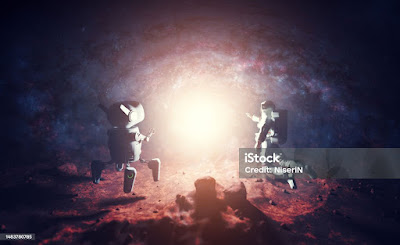Introduction
As humanity continues to push the boundaries of space exploration, artificial intelligence (AI) stands poised to revolutionize every aspect of our cosmic endeavors.
From spacecraft navigation to data analysis on distant planets, AI technologies hold the key to unlocking new frontiers and advancing our understanding of the universe. Let’s delve into the myriad applications of AI in space exploration.
1. Autonomous Spacecraft Navigation
In the vast expanse of space, where communication delays can span minutes or even hours, autonomous spacecraft navigation is essential for ensuring mission success.
AI-powered systems equipped with advanced algorithms enable spacecraft to make real-time decisions, adjust trajectories, and navigate complex environments with precision.
From rendezvousing with distant asteroids to landing on the surface of Mars, AI enables autonomous navigation, reducing reliance on ground control and expanding the scope of exploration.
2. Robotic Exploration and Sample Collection
Robotic explorers equipped with AI capabilities are instrumental in conducting scientific research and sample collection missions in remote and hazardous environments. AI algorithms enable robots to analyze terrain data, identify scientifically significant features, and autonomously plan exploration routes.
Whether probing the icy moons of Jupiter or delving into the depths of Martian caves, robotic explorers equipped with AI technologies pave the way for groundbreaking discoveries and scientific advancements.
3. Space Mission Planning and Scheduling
The planning and scheduling of space missions involve complex logistical challenges, requiring meticulous coordination of resources, instruments, and scientific objectives.
AI-driven planning systems optimize mission schedules, taking into account factors such as fuel consumption, communication windows, and scientific priorities.
By automating the planning process and dynamically adapting to changing conditions, AI enhances mission efficiency and maximizes scientific return on investment.
4. Data Analysis and Image Processing
The vast amounts of data collected by space probes, telescopes, and rovers pose significant challenges for analysis and interpretation. AI algorithms excel at processing large datasets, identifying patterns, and extracting valuable insights from complex scientific data.
Whether classifying celestial objects, analyzing planetary surfaces, or detecting elusive phenomena like gravitational waves, AI enhances our ability to unravel the mysteries of the cosmos and expand the frontiers of knowledge.
5. Predictive Modeling and Space Weather Forecasting
Space weather phenomena, such as solar flares and geomagnetic storms, pose risks to spacecraft, satellites, and astronauts operating in space.
AI-powered predictive modeling techniques enable scientists to forecast space weather events, assess their potential impact, and mitigate risks to mission safety and infrastructure.
By providing early warnings and actionable insights, AI enhances our ability to safeguard space assets and ensure the success of future space missions.
6. Crew Support Systems and Human-Machine Interaction
In crewed space missions, AI technologies play a crucial role in supporting astronauts and enhancing human-machine interaction onboard spacecraft and space stations.
AI-powered systems monitor crew health, assist with daily tasks, and provide intelligent decision support in emergency situations. By augmenting human capabilities and fostering collaboration between humans and machines, AI contributes to the safety, efficiency, and well-being of spacefaring crews.
7. Autonomous Space Telescopes and Observatories
AI-enabled space telescopes and observatories revolutionize astronomical research by autonomously selecting targets, optimizing observation parameters, and conducting follow-up observations in response to transient events.
By leveraging AI for real-time data analysis and decision-making, these automated observatories accelerate the pace of discovery, enabling astronomers to study celestial phenomena with unprecedented depth and detail.
Final Thoughts
In conclusion, the applications of AI in space exploration are as vast and boundless as the cosmos itself. From autonomous spacecraft navigation to robotic exploration, data analysis, and predictive modeling, AI technologies are transforming the way we explore, understand, and interact with the universe.
As we venture further into the depths of space, AI will continue to play a pivotal role in shaping the future of space exploration and expanding the horizons of human knowledge and discovery.
Edited By - Mobashsharin
This article has been authored exclusively by the writer and
is being presented on Eat My News, which serves as a platform for the community
to voice their perspectives. As an entity, Eat My News cannot be held liable
for the content or its accuracy. The views expressed in this article solely
pertain to the author or writer. For further queries about the article or its
content you can contact on this email address - mobashsharin@gamil.com










0 Comments